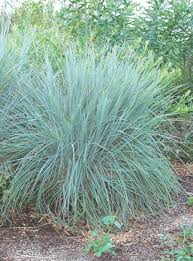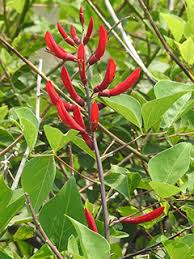Butterfly Host Plants: What to Grow to Help Caterpillars Thrive
- Hannah O'Connor

- Jun 5, 2025
- 6 min read
Butterflies bring vibrant color and graceful movement to our gardens, delighting both kids and adults alike. But did you know that simply planting nectar-rich flowers isn’t enough to truly support butterfly populations? To help butterflies complete their life cycle—from egg to caterpillar to chrysalis to adult—you need to offer something even more essential: host plants.
Host plants are the specific plants where butterflies lay their eggs and caterpillars feed and grow. Without them, butterflies can’t reproduce, and your garden becomes a beautiful—but brief—stopover. Luckily, many native Texas plants double as host plants for a variety of local butterfly species. In this blog, we’ll highlight the best options for Central Texas gardens so that you can transform your yard into a butterfly haven.

What Are Butterfly Host Plants?
Butterfly host plants are the specific plants that certain butterfly species rely on to lay their eggs and nourish their caterpillars. While adult butterflies sip nectar from a variety of flowers, their caterpillars have a much more limited diet, often depending on a single genus or species of plant to survive. Without the right host plant available, butterflies cannot reproduce successfully, and caterpillars will not have the food they need to grow and develop.
Why Nectar Plants Aren’t Enough
Many gardeners focus on colorful blooms that attract adult butterflies, but nectar plants only support one stage of the butterfly's life. To truly make your garden butterfly-friendly, you also need to provide host plants. These are the leaves that caterpillars will munch—so don’t panic when you see some foliage damage! That’s a sure sign your garden is doing exactly what it’s meant to do.
Top Host Plants for Central Texas Butterflies
Adding the right host plants to your landscape can turn your garden into a full-service butterfly habitat. Here are some of the best native and well-adapted plants to support caterpillars in Central Texas:
1. Milkweed (Asclepias spp.)
Host for: Monarch, Queen
Native milkweed species like Antelope Horns and Green Milkweed are critical for Monarch butterflies, which cannot reproduce without them. These tough perennials are drought-tolerant, thrive in poor soils, and bloom from spring into summer. In addition to being host plants, milkweeds are also rich nectar sources that benefit a wide variety of pollinators. Avoid tropical milkweed if possible, as it can disrupt the natural migration cycle of Monarchs.
2. Passionflower Vine (Passiflora spp.)
Host for: Gulf Fritillary, Zebra Longwing
This striking vine produces ornate purple flowers and thrives in full to partial sun with well-drained soil. It’s the exclusive larval food source for Gulf Fritillary caterpillars, which can often be spotted munching the foliage. While caterpillar activity may defoliate the plant temporarily, passionflower bounces back quickly with lush new growth. It’s an excellent choice for trellises, fences, or containers with vertical support.
3. Fennel, Dill, Parsley, and Rue
Host for: Black Swallowtail
These culinary herbs double as important host plants for the Black Swallowtail. Their fine, feathery foliage is especially appealing to egg-laying butterflies and growing caterpillars. Best grown in sunny beds, raised planters, or containers, they also add soft texture and fragrance to the garden. Keep an eye out for clusters of small, yellow eggs and striped caterpillars—they’re a sure sign your herbs are doing their job.
4. Citrus Trees (e.g., Citrus sinensis, Citrus limon)
Host for: Giant Swallowtail
Giant Swallowtails are among the largest butterflies in Texas, and their caterpillars depend on citrus trees for survival. Even small or potted citrus trees will attract egg-laying adults. The young caterpillars are often camouflaged to look like bird droppings—a clever defense against predators. These trees not only support wildlife but also provide fragrant blossoms and edible fruit.
5. Lindheimer Senna (Senna lindheimeri)
Host for: Cloudless Sulphur
Lindheimer Senna is a tough, Texas native shrub that produces cheerful yellow blooms from late spring through summer. It thrives in rocky, well-drained soils and full sun, making it ideal for xeriscaped gardens. Its leaves are the preferred food for a variety of sulphur butterfly caterpillars. This plant also attracts bees and makes a striking statement in native or pollinator-focused landscapes.
6. Dutchman’s Pipe (Aristolochia spp.)
Host for: Pipevine Swallowtail
Dutchman’s Pipe is a unique, twining vine with large, heart-shaped leaves and unusual pipe-shaped flowers. It’s the exclusive host plant for the Pipevine Swallowtail, a butterfly known for its iridescent blue hindwings. Not all Aristolochia species are safe for caterpillars, so it’s important to plant a native or caterpillar-safe variety. This vine does best with partial shade and a structure to climb.
7. Little Bluestem (Schizachyrium scoparium)
Host for: Skipper butterflies
Little Bluestem is a native ornamental grass that supports various skipper butterflies during their larval stage. It features narrow blue-green blades that turn coppery-orange in the fall, adding year-round visual interest. This low-maintenance plant thrives in dry, sunny spots and improves soil health over time. It's especially valuable in prairie-style gardens or low-water landscapes.
8. Texas Lantana (Lantana urticoides)
Host for: Painted Lady
Texas Lantana is a rugged native shrub known for its clusters of bright orange and yellow blooms. While primarily a nectar source, it also provides larval food for some butterflies, especially in more naturalized settings. It thrives in hot, dry conditions and is deer resistant—making it a staple in many Central Texas landscapes. Its long bloom season ensures a steady buffet for pollinators all summer.
9. Indian Blanket (Gaillardia pulchella)
Host for: Bordered Patch
Indian Blanket is a showy Texas wildflower with daisy-like blooms in fiery shades of red and yellow. It’s a favorite host plant of the Bordered Patch butterfly and reseeds readily, creating colorful waves year after year. This adaptable annual or short-lived perennial grows well in sunny beds, meadows, and even containers. Its extended bloom time and wildlife value make it a must-have for pollinator gardens.
10. Coralbean (Erythrina herbacea)
Host for: Long-tailed Skipper
Coralbean is a native Texas shrub known for its brilliant red flower spikes and attractive compound leaves. It thrives in part sun to full sun and is especially well suited for sandy or well-drained soils. As a larval host for the Long-tailed Skipper, it provides essential habitat while also serving as a nectar source for adult butterflies and hummingbirds. Though it dies back in winter, Coralbean returns each spring and makes a bold addition to wildlife-friendly gardens.
Tips for Creating a Host Plant Garden
Start Small, Think Wild
You don’t need acres of land to support butterflies—just a few carefully chosen plants in a garden bed, border, or even containers can make a difference. Choose host plants native to Central Texas for the best results, as local butterflies have evolved to rely on them. Grouping several of the same species together helps butterflies find them more easily and ensures there’s enough foliage to feed hungry caterpillars.
Avoid Pesticides
Even organic or “natural” insecticides can harm butterfly eggs, caterpillars, and chrysalises. If you want to create a true butterfly habitat, skip chemical sprays altogether—especially on or near your host plants. Let nature take its course and view leaf damage as a badge of honor: it means your garden is feeding future butterflies.
Expect (and Welcome) Leaf Damage

It may feel counterintuitive, but chewed leaves are a good sign. Healthy caterpillars eat—a lot! Rather than removing affected leaves or treating them, allow the plant to recover on its own. Many native host plants are adapted to regrow quickly after feeding and will continue supporting life throughout the season.
Support the Whole Life Cycle

Creating a butterfly-friendly garden means thinking beyond food. Adult butterflies also need safe places to bask, shelter from wind, and lay their eggs, while caterpillars need room to pupate and transform. Including a variety of habitat elements will help them complete their life cycle right in your yard.
Provide flat stones in sunny spots where butterflies can warm their wings in the morning. Set out shallow dishes of water with pebbles or sand for safe drinking. Leave a few undisturbed corners of your garden—free from mulch or foot traffic—where caterpillars can form chrysalises. The more diverse and natural your garden environment, the more likely it is to become a thriving butterfly nursery.
Conclusion
Butterflies do more than just beautify our gardens—they play a vital role in pollination and maintaining healthy ecosystems. By planting host plants tailored to the butterflies of Central Texas, you're giving these creatures a place to grow, feed, and thrive through every stage of life. Whether you’re working with a small patio or a sprawling backyard, adding even a few of these plants can have a powerful impact.
So the next time you admire a butterfly fluttering through your garden, remember: it all started with the right plant. Plant with purpose, and your garden will not only bloom with color—but with life.
Happy Gardening!
Sources
Texas A&M AgriLife Extension – Travis County. Butterfly Plants for Austin.https://travis-tx.tamu.edu/about-2/horticulture/ornamental-plants/annual-and-perennial-flowers-for-austin/butterfly-gardening/butterfly-plants-for-austin/
Lady Bird Johnson Wildflower Center. Native Plant Information Network (NPIN) – Host plant and butterfly associations. https://www.wildflower.org/
Native Plant Society of Texas. Butterfly Gardening Resources. https://npsot.org
Grown Green Native Adapted Plant Guide – Host plant details for Central Texas nativesGrown Green Native Ada….
Farmer’s Almanac. Pest-Resistant Plants & Butterfly Garden Tips



















































































Comments